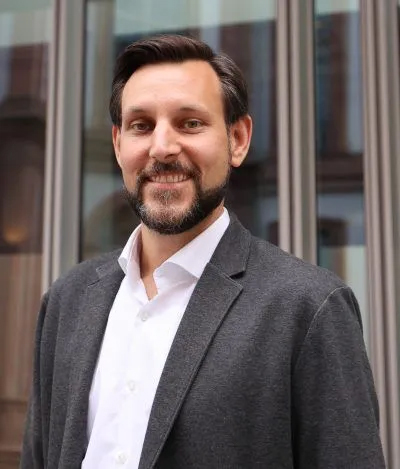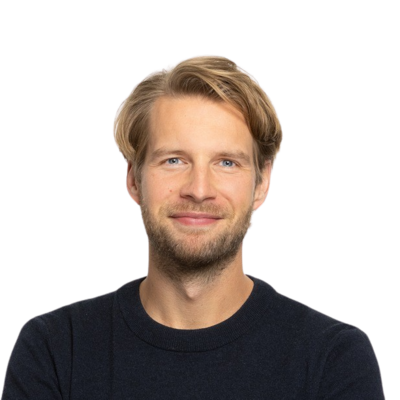
Interview: Digitalisation of the global HR function at STADA
The global introduction of a new HR suite is a major challenge for many companies. However, it can also be an opportunity, chance and lever for a comprehensive HR transformation. In our interview, Dr Thomas Mattes, Director People Analytics, explains how STADA achieved this together with undconsorten.
Anton Daigeler, &Consorten: Thomas, you successfully introduced a new global HR suite at the end of last year. How did this decision come about?
Thomas:At STADA, four values are at the centre of everything we do: Integrity, Agility, Entrepreneurship and OneSTADA. OneSTADA is the aspiration to act in the interests of the entire company, and the suite is an important lever for us to accelerate our transformation from a more localised to a global company. Historically, HR has been strong in our countries: local policies, processes and people data. But we see great potential in global standardisation. We have "one single source of truth", recognise things more quickly and can offer our management a high level of transparency.

Anton: How does the introduction support the transformation of your HR operating model?
Thomas: We are becoming global as HR, in the spirit of OneSTADA. This means we can better distribute and bundle tasks regardless of national borders, but also support each other better in the individual markets. For our many smaller markets in particular, this will also be a real benefit in terms of HR services. However, digitalisation also creates scope for us to support the business more strategically. A global perspective, transparency and strategic support from HR is also the clear expectation of our managers. With the introduction of the suite, we can do this better.
Anton: Was everyone on board straight away or were there also challenges during the introduction?
Thomas: First of all, of course, the change in mindset: getting out of local thinking, out of local systems. Adopting a global perspective at all levels was a change for all of us: from IT to HR to local management. We had little experience with global projects. That means a lot of expectation management on the one hand, but also very detailed implementation planning on the other. It was therefore important for us to find the right mix of global framework and local perspective.
Anton: How did you solve this?
Thomas: We decided to structure our markets into hubs - a concept that was largely already familiar from the business. This gave us clear contacts for mutual communication. In terms of transformation, this is also a structure that we want to use for the various roles in HR - to effectively support smaller markets that don't have a large HR team in the further development of HR roles.
Anton: During the process, you placed a strong focus on change management. What was your motivation for this?
Thomas: Change management is often talked about a lot in transformation, but then done too little or too late. We also wanted to take a different approach based on our experience in our pilot. We have started a major transformation on many levels: from local to global, much more digitalisation and transparency, and greater use of self services. This also involves new roles for HR and managers, a new operating model. We wanted to achieve this change not only in the large markets, which traditionally receive a lot of attention, but really across the entire organisation. In my opinion, achieving long-term success here requires explicit change expertise. We wanted to have an explicit point of contact for local concerns and relieve the specialist project managers in the process.
Anton: Did your previous experience outside STADA also contribute to investing in change?
Thomas: System implementations are often very efficiency-driven. The main focus is on realising synergies and completing the project on time and within budget. The user perspective is regularly ignored. At STADA, it quickly became clear that an HR system, which is for all employees, must have a different approach. Employees also perceive their employer through this system, through their employee experience. There are also concerns, e.g. with regard to data protection. Fulfilling this requirement is not a task for the sidelines. As a company, we thrive on diversity and every single employee. It would not have suited us to simply impose something on our employees.
Anton: What was the benefit of focussing on change in this way?
Thomas: We have succeeded in integrating all 45 markets in such a way that the suite and the associated transformation are truly accepted everywhere. As a decentralised organisation, this is a great success for us and not something to be taken for granted. We wanted to create an open project organisation in which there is also room for concerns and critical feedback. The investment in change was also a signal in this direction to all stakeholders. And it also enabled us to keep our finger on the pulse of the organisation throughout the entire project.
Anton: Rolling out in 45 countries within a year - you've set quite a pace. How did you manage that?
Thomas: Firstly, clear prioritisation. We sent out the message right from the start that the project and the scope were set. If there are no question marks and you can channel all your energy into the implementation, then the conviction of everyone involved grows. And if everyone believes in it, then it will become reality. Secondly, it was crucial that the entire project team was given enough resources across all the functions and markets involved. I am firmly convinced that a project like this cannot be successfully realised if people are doing it on top. The focus, speed and available brainpower suffer as a result. With our approach, we prevented a lot of friction losses. Thirdly, we had the right project team. That means team members who are not only really good in terms of content, but also know the organisation and its markets and stakeholders. As a result, we were always ahead of the wave. However, a strong team is of course also a challenge, and the change expertise helped us to channel the energy in the right direction.
Anton: How have users reacted to the introduction of the suite so far?
Thomas: The initial feedback and data are very promising - for example, more than 80% of our target population used the new target agreement process shortly after the go-live, and over 90% of managers actively used the system. We are getting feedback that the transparency and global approach have been well received. Our employees have also accepted the suite well. And with the introduction of further functionalities, e.g. learning, utilisation will only increase. At the same time, there is still some work to be done, especially with regard to data quality. For us, transparency of the system also means expectation management as another aspect of change.
Anton: What were the success factors for the positive acceptance by users?
Thomas: We found the right mix of push and pull between the head office and the local markets when supporting the change. We provided a centralised framework of materials, formats and channels, but left the individual design and implementation to the local professionals. However, it was also important for me to support the change in the local project teams themselves at an early stage and to create a good dynamic and energy. They act as our ambassadors for the business over the entire period and are therefore key multipliers. Overall, we were prepared to adapt the change approach and implementation dynamically and to develop it further with the stakeholders themselves. We didn't go through a blueprint and that was crucial. Last but not least, we also had great support from top management. For example, our CEO sent a video message to the entire organisation at the go-live with a clear message about the transformation. We also experienced this consistent "tone from the top" from many other managers. That was a great push for us.
Anton: Has the introduction also changed the way you work?
Thomas: We notice it directly with me in the digitalisation team. Of course, we were often the first port of call for problems or queries about digital HR processes, especially for colleagues on site. With the introduction of the suite, we were able to set up a global support model and a corresponding service organisation. This is a professionalisation that is a double benefit for us: faster and better support for users and more focus in my team for our core tasks.
Anton: How do you want to use the introduction of the next modules to further strengthen the transformation?
Thomas: We have only laid the foundations so far. The next modules will cover the entire employee life cycle and bring us much closer to the end user. The benefits of introducing the suite are becoming much more tangible, which means that the transformation can be communicated positively and integrated into day-to-day work. At the same time, we as HR can also analyse more data and thus make better adjustments if necessary.
Anton: What advice would you give other companies when introducing an HR suite?
Thomas: It is important to create strong commitment among key stakeholders right from the start: In top management, in the affected markets and in the project team. That's why it was a real asset for us to have someone on board who was explicitly involved in thinking through the change. If you don't get the stakeholders on board and involve them, then even the best concept in terms of content is useless.
Anton: Last question: It's 2025, how do you personally look back on the project?
Thomas: We will be delighted at how natural the benefits of the suite feel. Personally, however, I will also be grateful for the healthy naivety with which such a project is approached and therefore proud of the major transformation that we have achieved despite all the imponderables. Global projects and systems will be the new standard and we are part of the story that this is possible. Anton: Thank you very much, Thomas!
